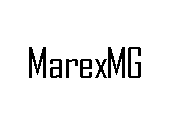 How much power do I need to access the ISS with Voice
or Packet?
How much power do I need to access the ISS with Voice
or Packet? How much power do I need to access the ISS with Voice
or Packet?
How much power do I need to access the ISS with Voice
or Packet?
The Minimum ERP (Effective Radiated Power) needed to access the ISS packet will vary between 1.0 watt ERP to 1,000,000 ERP. It all depends on how many stations are transmitting at the same time. The secret to a successful low power connection to ISS packer or Voice, is education and good timing. Packet QRP is much easier than QRP Voice operations, because packet is on 99% of the time. The ISS crew is only on voice occasionally and is very crew dependant. When the ISS crew is on Voice, a pile-up will quickly build. Low power and even HT with a Rubber duck antenna ISS contacts are possible, however they are very rare and your HT signal will usually be swamped by stronger stations. See related story below.
Your signal needs to be (all values are approximate) 3-6 dB greater than the noise level at the receiver. The receiver on ISS has a hearing range of 1500 miles, in ALL directions. If there are NO other active stations on the air at all, then a low power signal of 1.0 watts ERP signal will work for a 300 - 1000 mile distance to ISS. The more stations that are transmitting the greater amount of noise that will be heard at the Space Stations Receiver. Which means that on a busy day the amount of ERP you will need to be successful will increase, a lot!
The best times for low power QRP links with ISS, is when the band is not active, such as when everyone is in bed sleeping or when everyone is at work.
Evenings 00:00 - 05:00 local time, Most local stations are sleeping, this will make QRP easier.
Week days 10:00 - 15:00 local time, Many stations are at work, this too will improve your chances for a QRP link.
Peak Hours:
Peak hours are all weekend and weekday evenings. During peak hours, there may be many (50- 100) stations calling at the same time. Another busy time, is when there is a Crew change on ISS or some other notable Space Staion event. When ever the Space Station is in the "News" you will see an increase in the amount of Amateur radio packet activity.
Example:
Lets assume there are 100 stations all running 50 ERP.
At any given moment we will assume ten Earts stations are pinging ISS at the same time.
That's a total momentary power of 500 ERP hitting the ISS packet System.
Your station will either need to get lucky and ping when no one else is transmitting or you will need 6db more than the total hitting ISS or 2000 watts ERP.
Typical Station Setups are listed below on a chart. For reliable LEO/Easy-Sat access a MEDIUM power station is recommended. For deep space satellites a HIGH power configuration is recommended. This chart reflects the power and antenna configurations for the 2-meter band. For each band above 2-meters, add an extra 3dBd of antenna gain.
| Station | Transmitter | Antenna | Antenna | Coax cable | Estimated |
| Category | Power Watts | Elements | Gain dBd | Loss dB | ERP |
| QRP | 8 | 1 | 0 dBd | 3 dB | 2.5 |
| low | 50 | 1 | 0 dBd | 3 dB | 25 |
| Medium | 100 | 4 | 6 dBd | 3 dB | 200 |
| High | 150 | 10 | 10 dBd | 1 dB | 1200 |
| Big Gun | 1000 | 480 | 24 dBd | 1 dB | 256,000+ |
Below is a simplified antenna gain chart. This chart assumes the antenna is made up from 1/2 wave dipoles, hence the term dB(dipole) dBd. It is normal for the published antenna gain numbers to be distorted. When comparing antennas always just count the number of Dipoles the antenna is made from then use the gain chart below. Each time you double the number of Dipoles, you increase your gain by 3 dBd. If you want your radio to hear better, get a bigger antenna. The bigger antenna will also make your transmitter appear to be bigger too. (this chart does not take into consideration coax loss)
| Antenna | Gain | Transmitter | Estimated |
| Elements | dBd | Power | ERP |
| 1 | 0 | 50 | 50 |
| 2 | 3 | 50 | 100 |
| 4 | 6 | 50 | 200 |
| 8 | 9 | 50 | 400 |
| 16 | 12 | 50 | 800 |
| 32 | 15 | 50 | 1600 |
QRP is not impossible, its just more challenging.
And always use minimal power
Sample ERP work sheet
http://www.iowarepeater.org/iarc.erp.html
You are visitor #
since MAY 2001
Last updated April 2006
©(2006) MAREX-MG
wf1f Marex